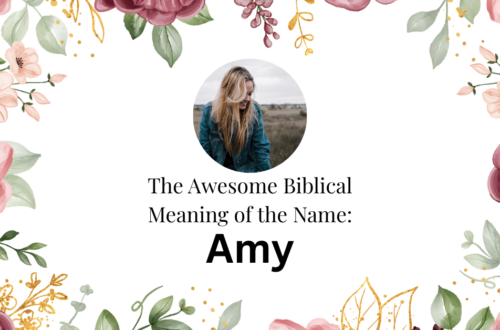Studying the Bible can feel overwhelming at times. With sixty-six books, countless chapters, and a wealth of historical, theological, and spiritual content, many believers ask the question: “Where do I start?” Maybe you’ve opened your Bible, read a passage, and found yourself unsure how to apply it—or even what it truly means.
You’re not alone.
Thankfully, there’s a simple and effective method that can help you not just read the Bible but live it out. It’s called the S.O.A.P. method—a practical, focused way to dig into God’s Word and walk away changed.
In this post, we’ll break down what S.O.A.P. stands for, how to use it, and how it can transform your daily quiet time with God. Whether you’re brand new to studying Scripture or looking to refresh your devotional life, this guide will equip you to engage deeply and personally with the Bible.
What is the S.O.A.P. Bible Study Method?
S.O.A.P. stands for:
- S – Scripture
- O – Observation
- A – Application
- P – Prayer
It’s a simple structure for reading a Bible verse or passage and intentionally reflecting on it. The S.O.A.P. method helps you slow down and pay attention to what God is saying, rather than skimming through or rushing your time in the Word.
Let’s break down each component.
S – Scripture
The first step is simple: choose a passage of Scripture and write it out. Yes, actually write it—word for word.
There’s something powerful about physically writing God’s Word. It helps you focus, remember, and meditate on what you’re reading. Start with a verse, a few verses, or even a whole chapter depending on your time and focus that day.
📖 Example:
If you’re reading Psalm 46, you might choose verse 10:
“Be still, and know that I am God. I will be exalted among the nations, I will be exalted in the earth!” – Psalm 46:10 (ESV)
Take your time. Let the verse settle in your heart as you write it down.
O – Observation
Now that you’ve written the Scripture, take a moment to observe. Ask yourself:
- What stands out in this verse?
- Are there any repeated words or themes?
- What does this passage say about God? About people?
- Is there a command, promise, warning, or truth here?
In this step, you’re not trying to interpret or apply it yet—just observe what the verse says. Look at the context if needed by reading the surrounding verses or chapter.
✍️ Example Observation for Psalm 46:10:
This verse is a command: “Be still.” It reminds me that God wants me to stop striving. It also declares God’s sovereignty—He will be exalted, not just in my life but in the entire world.
You might even note down any questions that arise during this part. Don’t be afraid to wrestle with the text.
A – Application
This is where the rubber meets the road.
Ask: How can I apply this verse to my life?
Think about:
- Is there a sin to confess or avoid?
- A promise to believe?
- A truth to hold onto today?
- A mindset shift God is calling me to make?
- A habit I need to start or stop?
God’s Word is meant to transform us. When we read it with an open heart, it shows us who we are—and who God wants us to be. Application is where we make it personal.
💡 Example Application for Psalm 46:10:
God is calling me to slow down. I’ve been anxious about my to-do list and trying to control everything. But today, I need to “be still” and trust that God is in control. I will take five minutes today to sit in silence and focus on Him, surrendering my stress.
P – Prayer
Lastly, respond to God in prayer. Use the Scripture and your application as a guide. Your prayer might include:
- Praising God for who He is
- Confessing your struggles
- Asking for strength to obey
- Thanking God for His Word
This doesn’t have to be long or fancy. Just talk to God from your heart.
🙏 Example Prayer:
God, thank You for reminding me that You are in control. I confess that I often try to fix everything on my own. Help me be still and trust You. Let Your peace reign in my heart today. Amen.
Why the S.O.A.P. Method Works
So why is S.O.A.P. such a powerful method for Bible study? Here are a few reasons:
1. It’s Simple and Repeatable
You don’t need a theology degree, commentaries, or a set of fancy tools. All you need is your Bible, a journal, and a willing heart. You can do this in 10 minutes—or take longer if you’d like.
2. It Helps You Engage with God Personally
S.O.A.P. turns Bible reading into a conversation with God. It’s not just information; it’s transformation. It brings your quiet time to life.
3. It Builds a Habit of Consistency
Because it’s simple, it’s sustainable. You can do this daily and track your spiritual growth over time.
4. It Works for Any Passage
Whether you’re in the Psalms, the Gospels, or Paul’s letters, the S.O.A.P. method works anywhere in Scripture. You’ll find fresh insight no matter where you are.
How to Start Using S.O.A.P. in Your Quiet Time
Here’s a step-by-step guide to get started:
- Pick a Time and Place – Choose a consistent time and quiet spot where you won’t be distracted.
- Have Your Tools Ready – Bible, notebook or journal, pen, and maybe a highlighter.
- Pray First – Ask God to speak to you through His Word.
- Use S.O.A.P. – Scripture, Observation, Application, Prayer—write out each section in your journal.
- Stick With It – Don’t worry if it feels slow at first. Like any habit, it gets easier and richer with time.
Ideas for Where to Start in Scripture
If you’re unsure what to study, here are a few good starting points for the S.O.A.P. method:
- The Gospel of John – Get to know Jesus intimately
- Psalms – Perfect for emotional honesty and worship
- Proverbs – Packed with practical wisdom
- Ephesians – Learn your identity in Christ
- James – A great mix of faith and practical action
You can also follow a topical study (like love, peace, or prayer) or use a Bible reading plan. The YouVersion Bible app offers countless plans that pair beautifully with the S.O.A.P. method.
How I Use the S.O.A.P. Method Personally
Over the years, the S.O.A.P. method has become a cornerstone of my personal Bible study. It’s helped me slow down and listen, even during busy seasons.
Some days my observations are rich and deep; other days, they’re short and simple—but God meets me in both.
I’ve used it to study difficult seasons of grief, to prepare for a new school year, and to reflect on God’s faithfulness in motherhood. It’s helped me recognize His hand in the everyday moments.
And what I love most? It’s flexible. You can do it alone, with your children, in a small group, or even as part of a classroom devotional if you’re a teacher like me.
Final Thoughts
God’s Word is living and active (Hebrews 4:12). It has the power to change our lives from the inside out. The S.O.A.P. method is just one way to approach Scripture—but it’s a powerful one. It invites you into intentional study, honest reflection, and heartfelt prayer.
If you’ve been longing for a deeper relationship with God, don’t overcomplicate it. Open your Bible. Start with S.O.A.P. And watch how God transforms your time with Him.
Let’s Connect!
Have you used the S.O.A.P. method before? Are you starting it now? I’d love to hear how God is working in your Bible study time. Share your thoughts in the comments below or connect with me on Instagram @faithandformulas.
👉 Comment below: What’s your favorite verse to study using the S.O.A.P. method?





